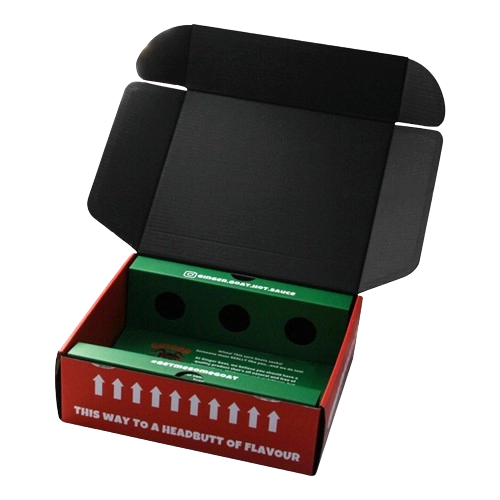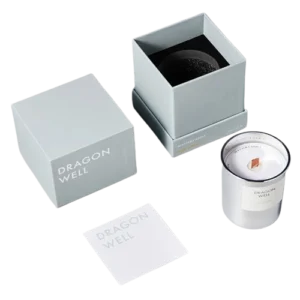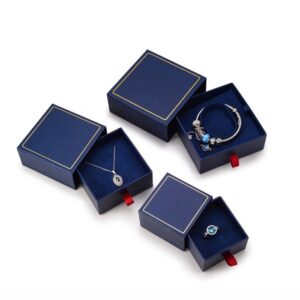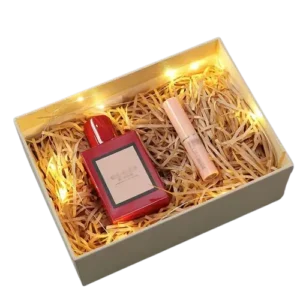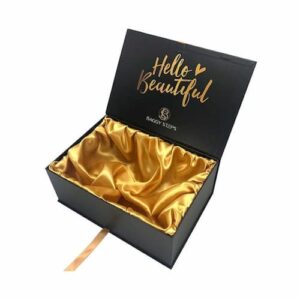Discover the perfect inserts for customized boxes. APP’s guide to foam, EVA, and recycled paper solutions balances protection, cost & brand values.
Request free samples and more info / quotation today!
- Assess product needs: Prioritize protection (e.g., foam/EVA for fragile electronics, molded pulp for lightweight ceramics) and weight limits.
- Match material to function: Use soft foam for cushioning, rigid plastic/blister for moisture resistance, or recycled paper for eco-friendly branding.
- Balance cost and durability: Opt for budget-friendly kraft inserts for basic protection; invest in custom EVA or thermoformed plastic for high-value items.
- Align with brand values: Choose sustainable options (FSC paper, biodegradable foam) or premium finishes (velvet-lined trays for luxury goods).
- Test prototypes: Verify fit, stability, and aesthetics (e.g., blister clarity for product visibility) before bulk production.
How to confirm the size of the inserts for customized boxes?
- Measure product dimensions precisely (length/width/height) using calipers or 3D scans, accounting for irregular shapes or fragile components.
- Align with packaging cavity: Deduct 2-5mm from the box’s inner size for snug inserts (e.g., 100mm box → 98mm insert to avoid over-tight fits).
- Factor in material thickness: Foam/EVA expands under compression; paper inserts require precise die-cutting to match product contours.
- Optimize cost with modular designs: Use adjustable partitions (e.g., scored paper inserts) to accommodate multiple product variants without retooling.
- Validate via prototypes: Test sample inserts for fit, stability, and protection (e.g., drop tests) before finalizing bulk production specs.
3 Steps to create inserts for custom boxes
1. Confirm all details in the description above.
- Materials, Printing, Sizes, Finishing, Accessories, etc.
2. Adjust the details to meet your budget.
- Save the costs by smaller size, thinner materials, more quantity, etc.
3. Sampling and trial order to test
- Get samples to test and approve by putting your products with inserts in the boxes.
More Info & Videos
10 FAQ of Inserts
Material Properties & Durability
Q1: Are custom foam inserts eco-friendly for luxury boxes?
A: Only REACH-compliant foam (≤0.1% VOC) qualifies. Standard EVA emits ethyl acetate. Opt for cross-linked PE foam (100% recyclable) from certified foam suppliers.
Q2: Will white box foam yellow in daylight?
A: Yes without UV stabilizers (+£0.08/unit). Foam solutions include light-resistant additives – request accelerated aging reports from the foam factory.
Q3: Can alternatives match custom cut foam protection for jewelry?
A: Only honeycomb cardboard approaches PE foam’s 28 N/cm² crush strength. For high-value items, custom foam boxes remain superior.
Structural Engineering
Q4: Maximum layers for foam in box electronics packaging?
A: 6-layer custom foam bonded with PU glue (peel strength >4.5 N/mm). Exceeding this risks ±0.3mm stack misalignment.
Q5: Do perforations reduce custom foam boxes costs?
A: Yes! Die-cut holes decrease material use 15-40%. Foam suppliers optimize designs for ≥1,000-unit orders.
Q6: Can crinkle paper replace foam for gift boxes in drops?
A: Only with 8+ layered sheets (150gsm). Single layers absorb just 18G impact vs custom cut foam’s 45G protection.
Material Compatibility
Q7: Will satin linings stain light-colored foam inserts?
A: Risk if dye migration > Grade 3 (ISO 105-E04). Specify colorfast-treated fabrics (+£0.12/unit) from foam solutions providers.
Q8: MOQ for soap boxes with custom foam inserts?
A: 5,000+ units for vacuum-forming. For smaller runs, use laser-cut PE foam (MOQ 500) from custom foam boxes manufacturers.
Q9: Do blister packs damage velvet box foam?
A: Yes via static cling. Foam solutions: Separate with 12μm anti-static film or use PETG instead of PVC.
Cost Efficiency
Q10: Why TPU pillows cost 5x more than foam for sale?
A: TPU requires 6-minute molding cycles vs 90s for foam. Only justifiable for medical/fragile items.
Q11: Can pre-printed custom boxes with foam skip decoration?
A: CMYK on kraft loses ∆E>5 accuracy. Use direct thermal transfer – maintains color fidelity on custom foam inserts.
Performance Science
Q12: Will EPS beads shift in transit?
A: Without anti-flow additives (0.5% paraffin), expect 15% settling. Foam suppliers offer expandable foam pouches as solutions.
Q13: Humidity resistance of PLA vs PETG foam boxes?
A: PLA warps at 85% RH; PETG maintains >90% integrity. Add desiccant cards in humid climates.
Compliance & Sustainability
Q14: Are shredded paper inserts compliant?
A: Only with FSC-certified foam and chlorine-free processing. Trace recycled content for EPR compliance.
Q15: Carbon footprint of corrugated vs molded pulp foam?
A: Corrugated: 1.2kg CO₂/kg | Molded pulp: 0.8kg CO₂/kg (requires 60-day biodegradation testing).
Premium Applications
Q16: Can logos be embossed on velvet foam inserts?
A: Only with >600g/m² density flocking. Standard 300g/m² pile collapses under >8 MPa pressure.
Q17: Best materials for gold foil on custom foam?
A: Art paper (98% adhesion) > coated cardboard (82%) > kraft (68%). Requires 120-150°C for hot foil stamping.
Risk Mitigation
Q18: Do PVC blisters damage contents?
A: Yes – phthalate outgassing harms electronics. Use APET foam (≤0.3% plasticizer) from reputable foam suppliers.
Q19: Why do magnets fail with thick foam boxes?
A: Ferrite magnets lose 20-45% pull force through ≥2mm foam. Use neodymium magnets at ≥6mm spacing.
Q20: Static risks in velvet-lined foam boxes?
A: Up to 15kV static in dry environments. Foam solutions: Carbon fiber weave or ionized air treatment.









